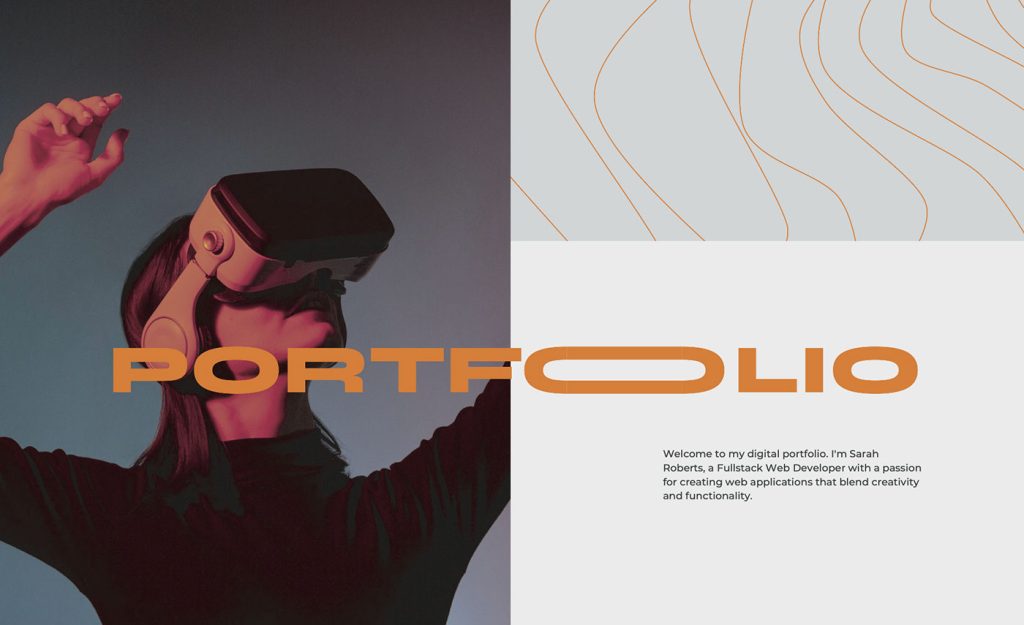How do designers use their own websites to promote themselves online? What are some good ways to set up an online presence that gets you found, puts your best foot forward and actively builds your design career? This is something we’re wrestling with (again) at our studio, and I thought I’d share a few of the ways we’ve been breaking it down.
As designers, we’re primarily a service, which is often harder to funnel through a marketing checklist. We deliver a “product,” but what happens around the creation, delivery and use of the product is at least as big a part of what defines a design business. Also, because designers’ chosen markets can vary dramatically (for instance, conversion-driven sales sites for businesses or personal sites for weddings and other events), the path a new client will take from discovering you to writing you a check will also vary. A lot.
Many means to many ends
As we researched designers’ approaches to presenting themselves with a website, the ultra individual nature of our industry is clear. Ultimately, there are as many methods as there are designers. To make sense of the marketing paths down which we could travel, we managed to break it down like this:
- No website: a number of designers have only a design or business network profile, like Behance, LinkedIn, Dribbble, etc.
- Single page website: minimal graphics (if any), and social links (Kronk and Lucia Soto have nice examples) allow designers a chance to highlight one concept they feel best defines them. Then, updates to a full portfolio only needs to happen when there’s a request.
- Portfolio-only site: another approach is to simply display work samples (set up as a gallery wall, a series of blog posts, a flavor of “carousel”, etc.) and contact info.
- Blog: this is a category all of its own as people create endless permutations of CMS frameworks. There’s the standard looking blog, the personal journal (including non-design entries, such as family outings, political insights, side projects), the image-only blog, etc.
- Full business or studio site (with About, Contact, Capabilities, Portfolio, etc.)
- Multiple sites which focus on specialties (i.e. type design, custom products)
There are impressive (and intimidating) examples of each approach, so the question becomes, “Which one best serves us?”
Positioning
Just as I began to outline this piece, digital strategist Sean Howard posted some excellent recommendations for digging past superficial marketing, i.e. loosening your white-knuckle grip on site traffic reports. My favorite was this Slideshare presentation about Customer Journey Mapping, by Lenati Consulting, which explains customer purchase paths in plain English. It’s had a huge impact on the way we are looking at marketing in general, and also how design websites (and other marketing tools) reach—and connect with—new clients.
It’s tempting to try to be everything to everyone, but there is the kind of work that brings out the best in you and that will truly help you move toward your goals. We shake our electric bills at the design superstars who trumpet that “it’s not about the money” while they bring in huge sums for their projects. Still, they’re mostly right. While we’ve learned to sniff out and say “no” to the nightmare clients, our next challenge is to narrow our marketing focus toward those with whom the creative sparks fly. It’s these clients who not only inspire our best work, but also value it most.
They are out there. Positioning is learning where to go to find them, as well as how to “light your beacon” so they can find you.
So what qualities define your ideals today? This month? This year? Do you see yourself as fiercely independent, an organizational team player, or as a merrily ticking studio? Are you inspired by all that’s stylistic and trendy, or the quiet classicism of cool and corporate? Are you energized by the glitter of elite exclusiveness, or the revolutionary zeal of down-to-earth inclusiveness? Are you most comfortable at conference tables or in wifi cafes?
These are the clues that will help you focus your marketing energy, decide how to build your next self-promo website, and to craft an online presence that gleams.
SEO
Our design site employs a reasonable amount of SEO, but mostly as a learning tool. In our 10+ year history, we have never received a design inquiry from someone who was just searching the web for “graphic designer” or something similar. I don’t believe that’s how people select design services, unless they are looking for a specific designer or studio by name. Every single one of our clients have come through personal referrals.
That said, when seeking freelancers, we’ve used sites like Behance, iFreelance and Dribbble. Even in those cases, we didn’t search the entire internet: their website’s search engine optimization had little (if anything) to do with our results.
By “personal,” I mean a friend, a colleague, or someone I built a strong relationship with via social media.
Social media: more emphasis on “Social”, less on “Media”
Media is more about broadcasting, and we have plenty of that in our faces, don’t we?
No matter how you’ve wired your website to your social media accounts, consider doing more than broadcasting design articles or posting your latest projects. If you are employing social media for SEO reasons, remember the section above and take a hard look at whether this really serves you.
To make social media connections work, you need to find and interact with your tribe—those people who share your values, especially your design values. Be helpful, ask questions, build relationships and empathize. It’s almost (but not quite) like real life. And just like real life, it can take a long time to build the really good ones.
Side projects and side revenue
For designers, this can be a slippery slope or an opportunity to grow. Will posting side projects or products dilute the impact of your website, or draw a richer picture about what you can do?
Creatives around the world and the web tackle numerous side projects as they explore personal design challenges and/or attempt to find additional sources of income. Side projects and revenue can include:
- Non-commercial creative projects
- Print-on-demand
- Digital downloads
With each choice, it’s important to keep asking ourselves if we’re growing not just revenue, but also our design careers.
Non-commercial creative projects
Painting, quilting, writing; community involvement, politics, religion. We’re people first, we’re interesting, and sometimes it’s a good idea to remind the world by including these on our website.
If you’re currently stuck in a template-dominated corporate grind, creative projects are a way to show your next employer more about what you’re capable of.
Print on Demand
Print on Demand (or POD) has huge potential for designers as its proliferating technologies roar forward. A lot of designers have already discovered that it’s a cost—and resource—effective way to test ideas, and not just for our own projects. Many clients can take advantage of it, too, for more-traditional promotional items and also for the surprising new items appearing almost daily. POD products run the gamut from the sublime to the ridiculous, from T-shirts, fabrics and chocolates to ceramic coasters, ceiling light covers and dog dishes.
Again, most important is the bigger question: “How does my involvement in this venture help me grow as a designer and connect with current and future clients?” Our studio has now made valuable connections via the fabrics and the chocolates. Very specific uses of Zazzle—one or two product types for a food client, have also been useful.
Digital downloads
Digital downloads—like artwork, photos and typefaces—are closer to the web design part of design. Many designers offer free downloadables, like icon sets and mobile wallpapers, as a self promotional tool. They can also be offered for sale, either directly from your site or from online “warehouses” like Creative Market and Webmaster Deals. Again, avoid hacking out gobs of crap, but also consider the possibility that this is a potential touchpoint for future design customers, and not just a weekend lemonade stand.
Looking at our available offerings through our new “Customer Journey” lens, we discovered some of our downloadables need to go. It’s not our best work, and says nothing to the types of clients we want to attract. Instead, we’ve decided it’s time to create the items we’ve been longing to tackle. We want to continue growing our passive income streams, and also show off what we have to offer as a design service.
Should you host ads?
We did this for a while, and in most cases, it turned out to be a bad idea. Unless your web traffic runs to tens of thousands of visitors, Adsense-type ads generally earn no more than pennies a day. Also, unless your site is set up as a “magazine”, it will probably devalue your design services. So far, we’ve also explored direct sell ads and ads that promote digital downloads (those are still up). In the spirit of experimentation, however, we gained much more intimate insights about the online ad world. Granted, this may be a rather weak argument for our being “true to brand”. The jury is still deliberating.
Conclusion
There are lots of individual priorities and issues to balance, from your available resources and time to the unique nature of your target market. Start with the realities of how you are currently finding your best clients. If you don’t have any yet, talk to someone whose goals appear to be similar. If you want to start attracting a new kind of client, research them to find out where they are and how they choose designers.
Because web design is an online world, we often forget there are other, and off-line, ways to connect with new clients. Still, even as one piece of a bigger puzzle, your website can be trimmed down and/or powered up to grow your design career.
Featured image/thumbnail, open image via Shutterstock.






